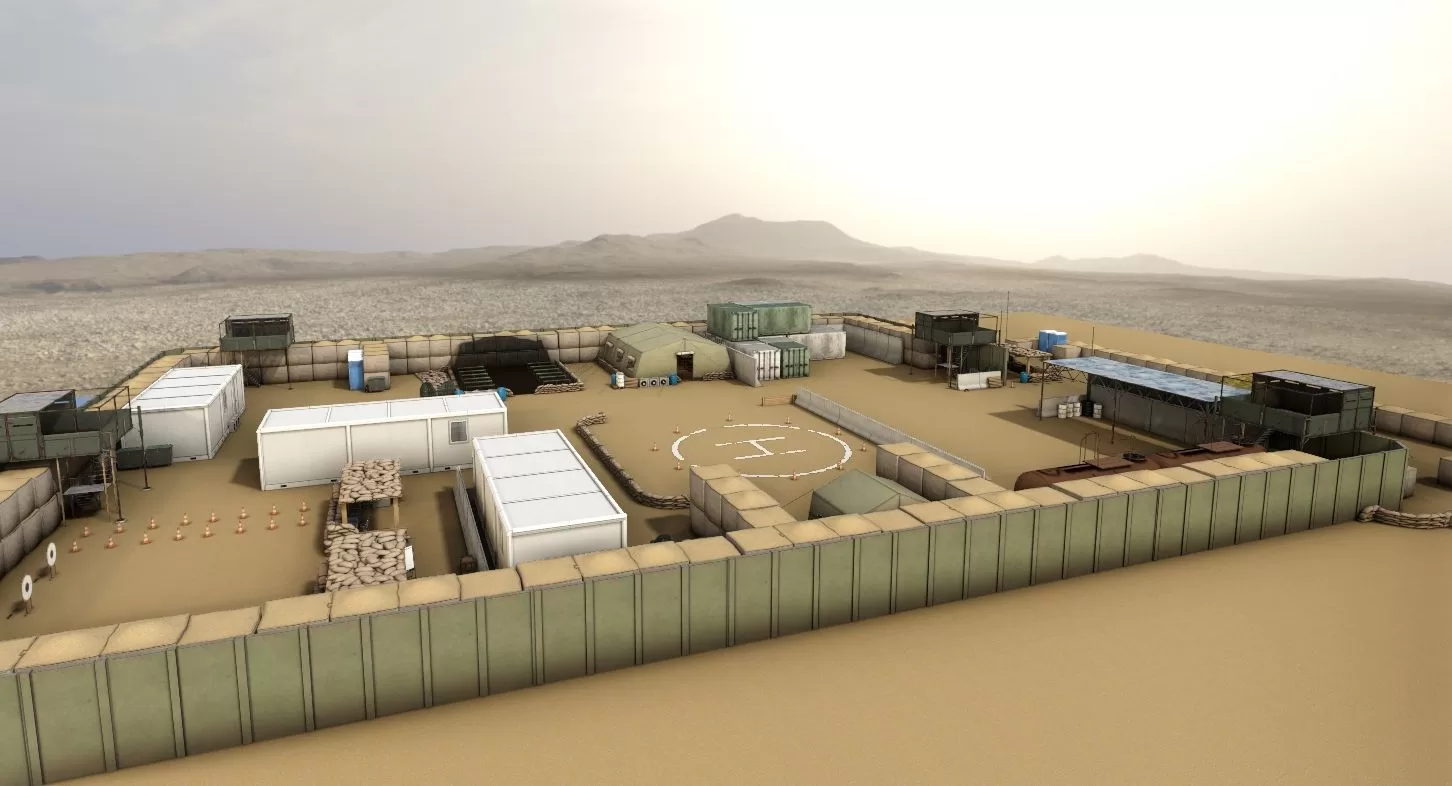
Replacing costly and logistically challenging military training with virtual reality is no longer a distant vision—it is happening now. „We can already do it today,“ says František Mičánek, Dean Emeritus of the NATO Defence College in Rome. With Virtuplex’s cutting-edge VR solutions, military personnel can plan, simulate, and train for complex missions with unprecedented realism and efficiency.
Virtuplex’s state-of-the-art VR development laboratory has unveiled a groundbreaking application of VR for military mission planning and simulation. Using high-fidelity digital maps, military strategists can design and optimize operational spaces, including field hospitals, command posts, firing positions, and full-scale military bases. This system goes beyond traditional planning—it enables users to refine layouts for maximum efficiency, ensuring that materiel and personnel placement is both strategic and ergonomic.
Thanks to Virtuplex’s 600 m² VR space, teams can experience their environment in true 1:1 scale. Whether training for rapid deployment or optimizing logistical setups, personnel can walk through and interact with a fully realized virtual military base, gaining crucial familiarity before ever setting foot in the field.
How did the idea for military VR training originate?
„The idea struck me as I was walking through Virtuplex,“ Mičánek recalls. „Despite having no prior experience with VR, I quickly saw its potential beyond architectural visualization. Given my military background, I realized that what Virtuplex was doing for urban planning could be equally transformative for military training and education.“
What was your first impression of Virtuplex VR?
„I had no specific expectations,“ he admits, „but I was completely blown away. The sense of immersion was total—I forgot where I actually was. The graphics, sound, and avatar interactions were incredibly lifelike, making the experience feel real.“
Why is VR superior to traditional training methods?
Does VR have any limitations?
„Of course,“ Mičánek acknowledges, „but technological advances are rapidly overcoming them. Data transmission speeds, storage capabilities, and display resolutions are all improving. VR is already an irreplaceable tool for transforming theoretical knowledge into hands-on capability.“
One of the most significant advantages of VR training is its ability to prepare soldiers before deployment. „Imagine walking through your future base before setting foot on foreign soil,“ Mičánek explains. „VR allows soldiers to familiarize themselves with every detail of their operational environment—where command centers are located, where to seek cover, and how to navigate crisis points. This level of preparation significantly reduces adaptation time and enhances safety.“
Does this improve mission security?
„Absolutely,“ he confirms. „When soldiers know the terrain before arrival, they react faster and more effectively. From identifying safe zones to locating emergency equipment, VR pre-training can save lives.“
While the Czech Army has implemented VR in certain simulator-based training exercises, full-scale immersion technology like that offered by Virtuplex is not yet widely adopted. „Abroad, countries like the US, UK, and South Korea have advanced virtual training centers, and New York’s police force likely has one of the best VR training programs in the world. But we’re not far behind.“
Virtuplex is currently engaging with key stakeholders in defense and security. „We’re actively exploring how VR can be best utilized within the military and emergency services,“ Mičánek states. „Our goal is not to push a pre-made product but to tailor solutions that meet real operational needs.“
Recent discussions with the Czech Defence University in Brno and training units from the Czech Army’s Simulation Technologies Center in Vyškov show promising interest. Conversations with the Czech Police are also underway. „The demand is there,“ Mičánek notes, „but implementation will depend on funding and procurement timelines.“
With its unparalleled ability to create realistic, interactive training environments, Virtuplex’s VR technology is redefining military preparedness. From optimizing mission planning to enhancing soldier safety, the potential of virtual reality in defense is only beginning to be realized.
As Mičánek aptly summarizes, „Virtual reality isn’t just an upgrade—it’s a transformation. The future of military training is here, and it starts with Virtuplex.“
For further insights into how Virtuplex is revolutionizing defense training through VR, visit our VR for Defence & Emergency website section or contact our team for a demonstration.